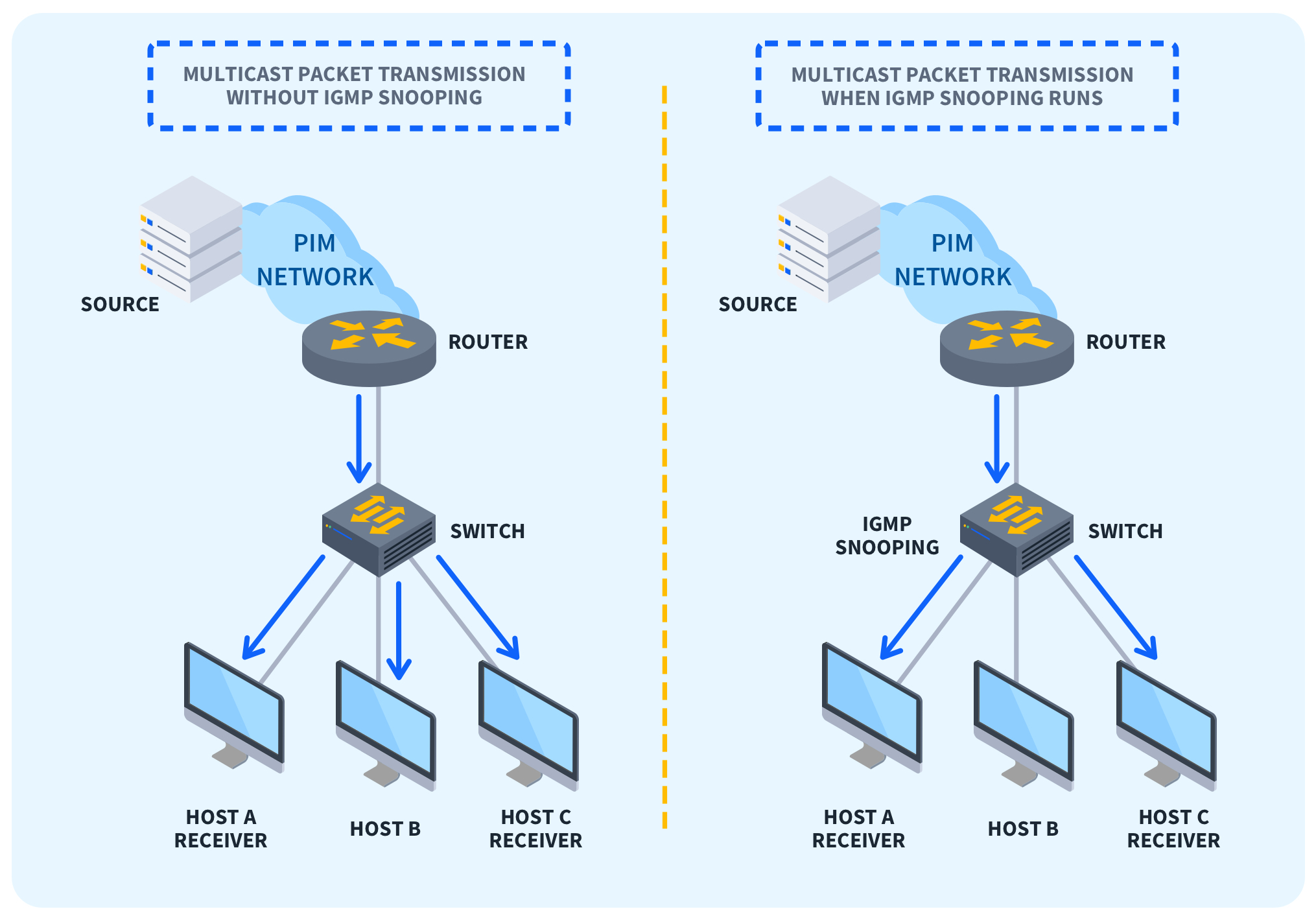

Quick Definition: IGMP snooping is a networking feature that allows switches to manage multicast traffic by monitoring IGMP messages. It helps reduce unnecessary traffic, improves security, and optimizes networking traffic.
When it comes to networking, network performance is the name of the game. IGMP (Internet Group Management Protocol) snooping is key to reducing network congestion, enhancing security, and improving overall network performance.
In addition to being important for overall network health, it's also a concept you'll need to understand to pass the Network+ certification exam. Below, we'll explore what IGMP snooping is, how it works, and how to implement it successfully.
Internet Group Management Protocol (IGMP) snooping is a feature commonly found in network switches. It's primarily used in multicast environments where multiple devices receive the same data stream simultaneously. Multicast groups are basically a group of computers that have the same network traffic.
IGMP snooping helps optimize multicast traffic with a Local Area Network (LAN), enhancing efficiency and bandwidth utilization. IGMP snooping becomes critical in scenarios where careful management of bandwidth is required. It allows several devices to use the same IP address so they can receive the same data.
IGMP is used to manage host memberships and routing devices in a multicast group. IGMP snooping controls these multicast groups through snooping and analyzing multicast packets exchanged between upstream devices and downstream hosts.
IGMP works through monitoring and management of multicast traffic within a LAN. Multicast packets face issues traveling through Layer 2 switches of a LAN between the router and the multicast user. Multicast traffic by Layer 2 switches is dealt with as broadcast traffic, which is highly inefficient and can create security risks.
The cause of this inefficiency lies in the inability of switches to learn MAC addresses, resulting in multicast packets being broadcasted to all hosts, which is a waste of bandwidth and a threat to information security.
IGMP snooping restricts the flooding of IPv4 multicast traffic on a device’s VLAN. Once IGMP snooping is enabled, switches listen to IGMP network messages exchanged between hosts and routers. These messages include join and leave messages indicating which host wants to leave which multicast group.
Based on this information, IGMP builds a forwarding table and forwards only the traffic where group members are interested in a specific multicast content.

Yes, multicasts can definitely work without IGMP snooping but at the cost of efficiency and optimization of multicast traffic. Without IGMP snooping, multicast traffic by Layer 2 switches is dealt with like broadcast traffic, meaning they forward multicast packets to all hosts within a port irrespective of the interests of the host.
The absence of IGMP snooping can create network congestion due to inefficient and unoptimized multicast traffic. It also hampers the security of the network, as sensitive information can be exposed to unnecessary recipients.
We've already explored some of the benefits of IGMP snooping, including reducing congestion. Additional benefits include:
IGMP snooping should be enabled when a network is using multicast applications like online conferences, gaming, and video streaming. IGMP improves the management of multicast groups and helps optimize traffic. Moreover, if bandwidth and resource optimization are critical for your network, enabling IGMP snooping will reduce unnecessary traffic and help create resource-efficient networks.
We also enable IGMP snooping when a network involves multicast routers; in this case, IGMP snooping ensures compatibility and delivery of multicast traffic to intended recipients. Check out this course for an understanding of IGMP Snooping implementation.
The process to enable IGMP snooping can vary based on the device and its operating device/software. The general steps for enabling IGMP snooping on common devices are as follows:
Troubleshooting IGMP snooping involves identifying and resolving problems related to multicast traffic and IGMP snooping functionality. If you're having issues you think might be related to IGMP, follow these steps:
Implementing IGMP snooping involves following best practices to reach optimal performance. Here are a few best practices to keep in mind:
IGMP snooping is a critical feature of network switches. Once enabled, it will optimize the handling of multicast traffic with LAN, resulting in enhanced network efficiency, reduction in bandwidth consumption, and a more responsive and scalable infrastructure.
To further understand and learn about IGMP Snooping, view this course on CBT Nuggets: IPv4 Multicast Fundamentals.